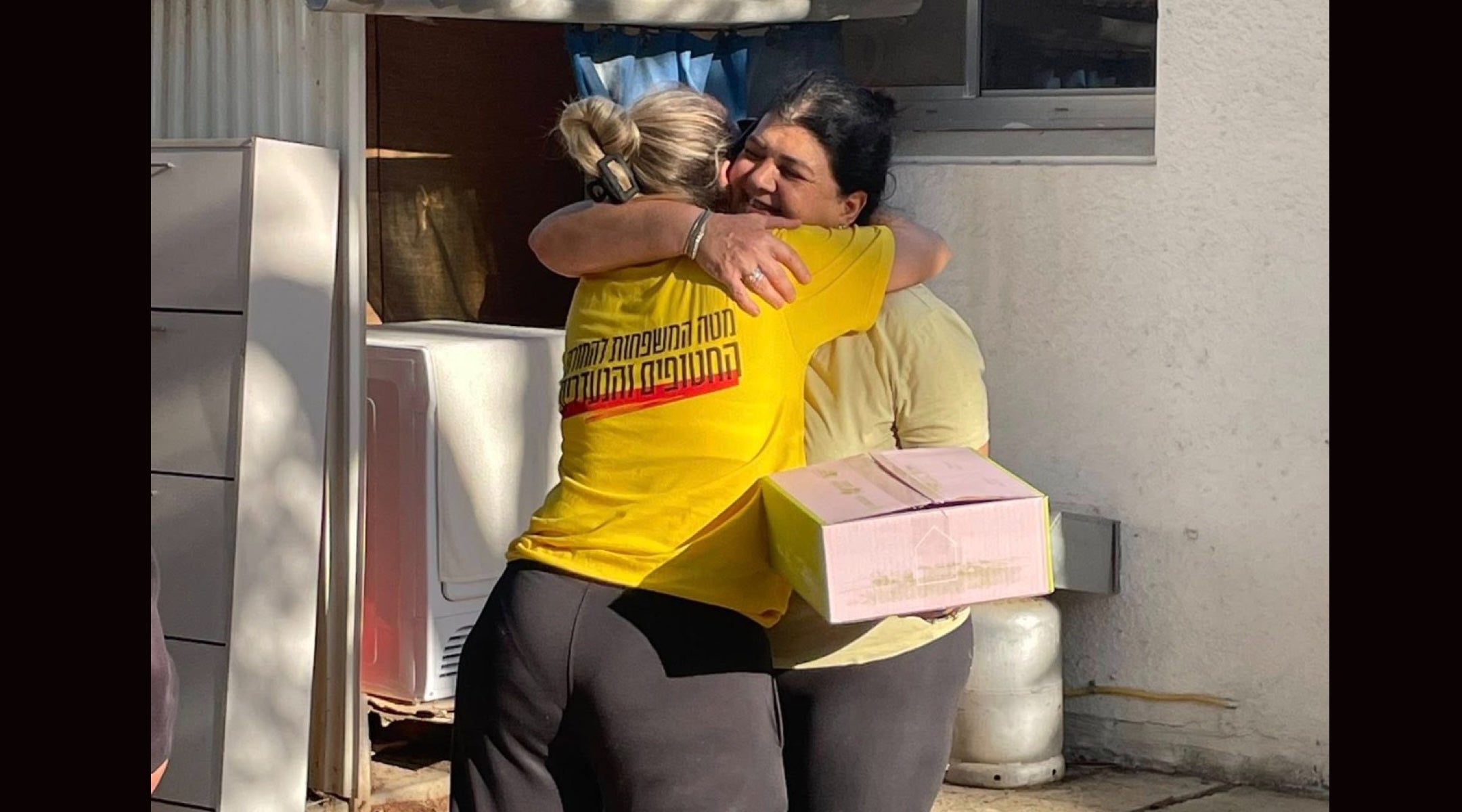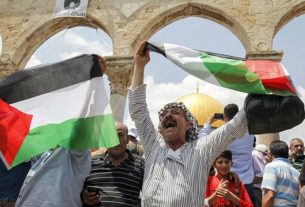Two years after the Oct. 7 massacre, Israelis are moving into kibbutzim in numbers not seen for years, part of a deliberate effort to repopulate and rehabilitate communities devastated in the Hamas-led attack. The push is most visible along the Gaza border, but it extends to the north as well, where Hezbollah fire kept communities thinly populated for more than a year and a half.
Leaders of the movement speak of kibbutzim as the country’s living perimeter. Neri Shotan, who runs the Kibbutz Movement’s rehabilitation fund, invoked an old adage: If the country went dark and only kibbutzim stayed lit, their lights would trace the map of Israel. Roughly 100 of about 260 Israeli kibbutzim sit on the borders, a design Shotan said was meant to anchor the edges through civilian life rather than fortifications.
The scale of the damage remains stark. The movement counts 56 kibbutzim evacuated after Oct. 7 and says kibbutz communities lost 318 people in the attacks, close to a quarter of the roughly 1,200 killed that day. Some 40,000 kibbutz members were displaced.
A new wall listing more than 450 kibbutz members who died on Oct. 7 and in the subsequent Gaza war has been added to a longstanding memorial for kibbutzniks killed in acts of terror since Israel’s earliest days.
A new wall has been added to the Memorial to Fallen Kibbutz Members in Mishmar HaEmek, listing more than 450 people who died on Oct. 7 and in the subsequent war in Gaza. (Courtesy Eitzik Shafran)
The state’s five-year plan for the Gaza periphery totals 19 billion shekels ($5.75 billion) and a report released in September by the government’s Tekuma directorate, the agency tasked with rehabilitating the Gaza envelope, said 7.9 billion shekels had been allocated so far, including 525 million shekels this year for programs to encourage evacuated residents to return.
Around 90% of evacuated Gaza-border residents are back, according to the report, and more than 2,500 newcomers have moved into the region. Minister Zeev Elkin, who is overseeing the recovery, said the plan was to double the population to 120,000 in the coming years.
Yet some of the hardest-hit places are lagging. Only about a third of Nahal Oz’s residents have returned. Nir Oz and Be’eri are only now entering the rebuilding phase.
The reopening of the bakery and print shop at Be’eri, where more than 100 residents were killed and dozens were taken hostage, were hailed as major steps toward rebuilding. But many of the workers commute from a kibbutz 40 kilometers to the east, near Beersheba, where Beeri’s displaced residents relocated.
And a ceremony to mark rebuilding at Nir Oz that featured Gadi Mozes, the octogenarian released from Hamas captivity in January who for many embodies the classic kibbutznik spirit, took place only in August, with workers placing the foundation then for new structures.
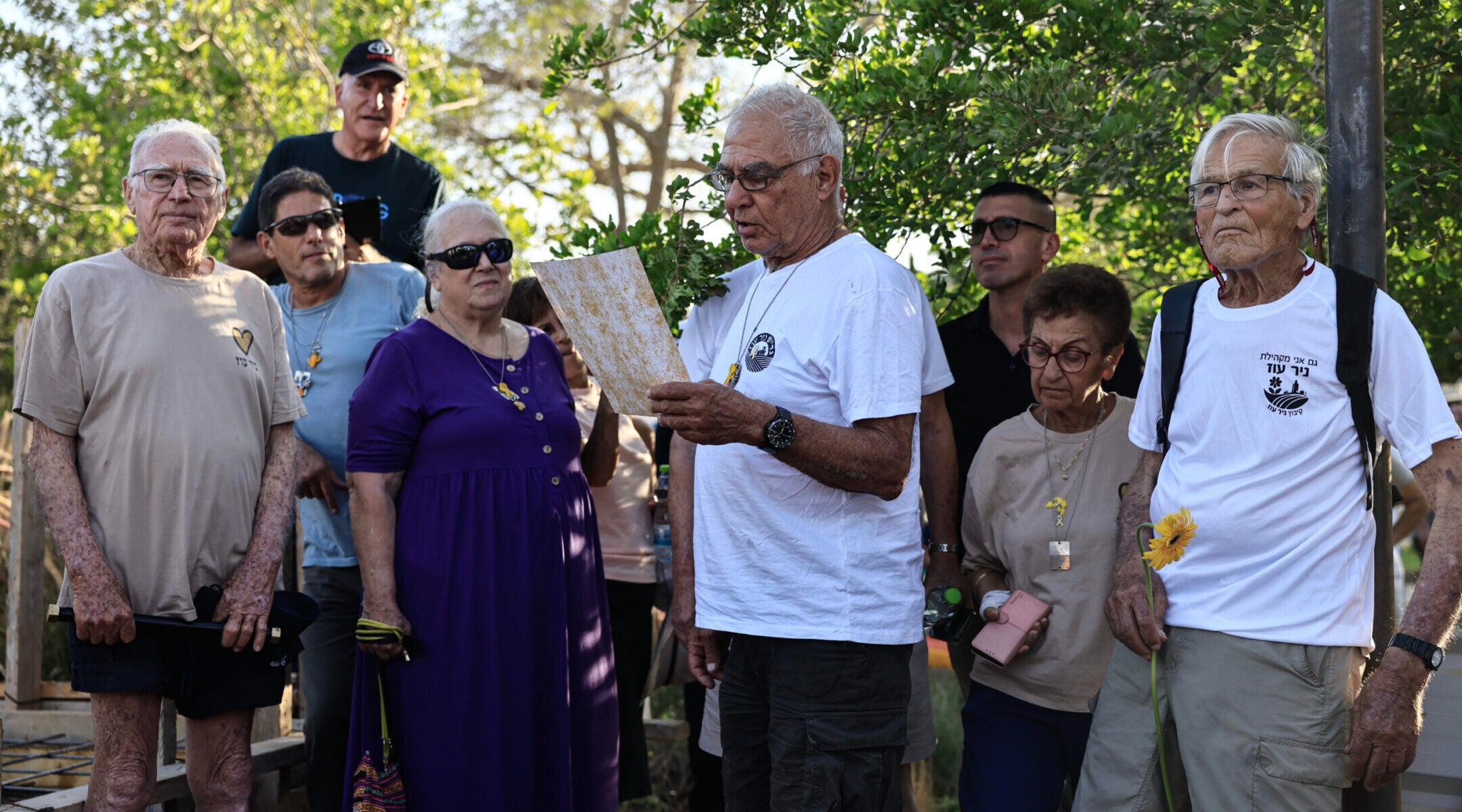
Released Israeli hostage Gadi Mozes at a ceremony marking rebuilding in Kibbutz Nir Oz, August 7, 2025. (Tsafrir Abayov/Flash90)
The Kibbutz Movement Rehabilitation Fund — set up within hours of the attack — positioned itself to fill gaps Shotan says the state has failed to address. It has raised roughly 160 million shekels to date, mostly from overseas donors.
Starting at 6 p.m. on Oct. 7, 2023, volunteers were handing out shoes to children who had fled barefoot, pressing the Interior Ministry to reissue identity cards lost in the wreckage and coordinating permissions and logistics for burials. In the months that followed, the fund placed evacuated children in schools, arranged ad hoc farm labor when reservist call-ups emptied crews and secured temporary housing. During June’s war with Iran, it set up an emergency volunteer hub that, among other tasks, delivered truckloads of mattresses to kibbutz shelters in the north.
The fund’s newest push is aimed at recruiting newcomers, in a project known as Chalutzi — a derivative of the Hebrew word for pioneer. Chalutzi serves as a clearinghouse and matchmaker between kibbutzim seeking members and newcomers looking for a place to live and volunteer. The project’s target is to relocate 1,000 families, with thousands of inquiries logged, alongside placements for young singles who want to live and work in border communities.
Among them is 29-year-old Ilan Gritsevsky, who in August left Tel Aviv for Kibbutz Nir Oz, where roughly a quarter of residents were murdered or taken hostage on Oct. 7 and where only six houses emerged unscathed. He is part of a cohort of about 50 young adults connected to the Hashomer Hatzair youth movement who are moving in as construction starts. For now they live in temporary housing financed by partners that include the rehabilitation fund, with new homes being built.
City life, Gritsevsky said, while fun, felt anonymous: “The only thing you share with your neighbors is a postal code.” The kibbutz offered shared purpose and a sense that neighbors were partners in rebuilding. But the deeper impulse, he said, was defense by presence. Called up on Oct. 7 to reserve duty in Nahal Oz, he described his relocation to Nir Oz as the natural next stage of service.
“At the beginning of the war I had to protect our borders with weapons, and today I feel that settling on our borders is a meaningful form of protection, for the country’s physical border and for the kind of country we want to be,” he said.
The new crop of young adults will establish an educational community, taking on informal education roles alongside the school day. The need is acute. Since Oct. 7, problems that were once uncommon among kibbutz teenagers, including substance and alcohol use, have become more visible, alongside broader trauma. Tekuma has earmarked 115 million shekels for personal, family and social services programs and 61 million shekels for trauma and bereavement, funding family-support services, parent-child centers, targeted assistance for at-risk families, prevention of domestic violence, treatment units for sexual assault, and programs for children, older adults and people with disabilities.
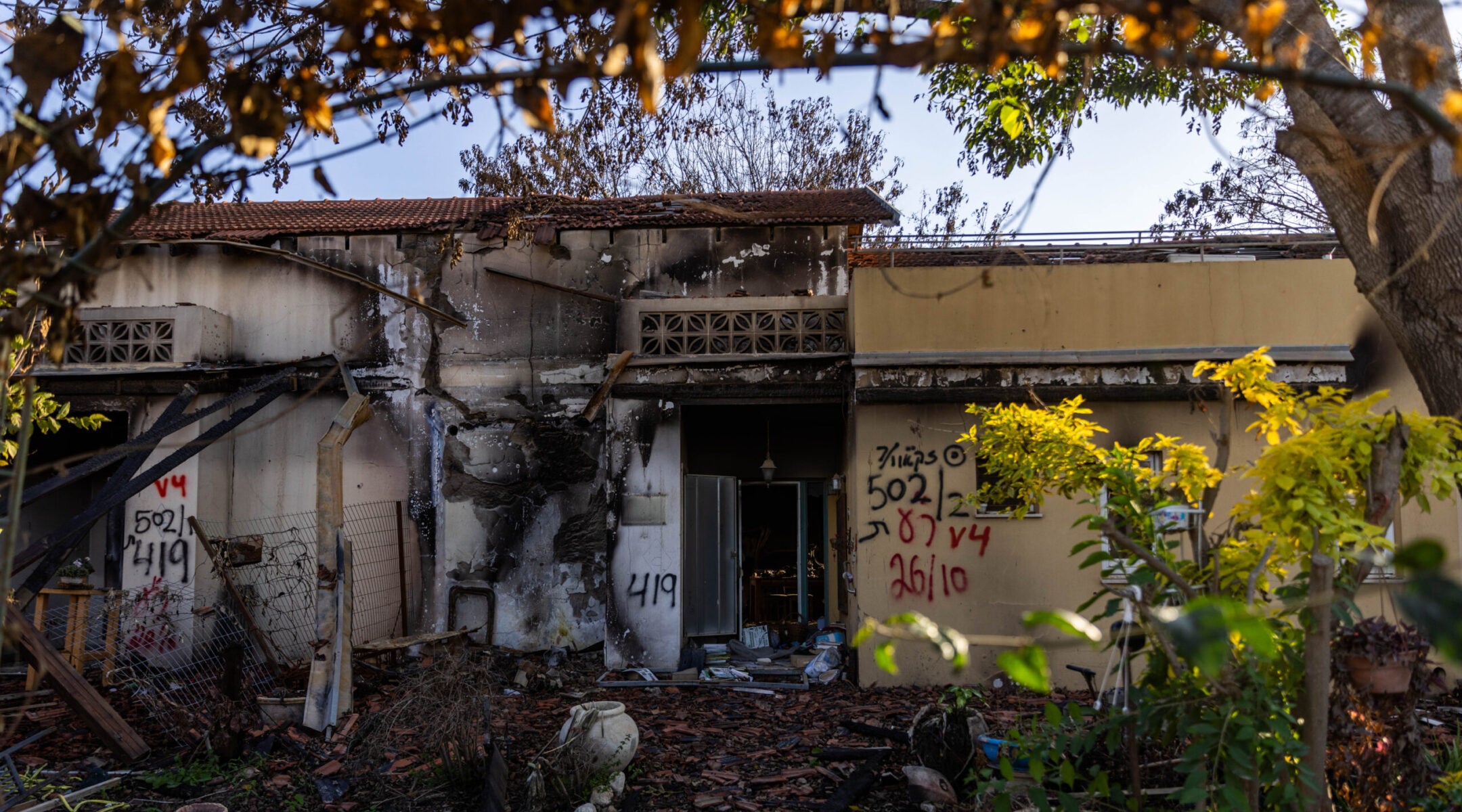
The remains of the destruction caused by Hamas terrorists when they infiltrated Kibbutz Be’eri on October 7, 2023, near the Israeli-Gaza border, southern Israel, as seen on Jan. 4, 2024. (Chaim Goldberg/Flash90)
In April, Nir Oz reached a state agreement for 350 million shekels to rehabilitate the community – becoming the last of the Oct. 7–affected sites to do so – but according to Shotan, it falls short of the 500 million shekels residents say is needed. KKL-JNF, which is financing rehabilitation projects nationwide, approved 75 million shekels for Nir Oz as part of a 750 million shekel national package, helping to narrow the gap.
Shotan said selling the idea of kibbutz life to families and young people is not difficult, because education, community and social support are big draws, and the cost of living in the periphery is far less than in Israel’s population centers.
But ideology, he said, was doing most of the work in driving people to move. “You have to be a real Zionist to do it. People who don’t have Zionism as a basic value won’t come.”
He traced the idea back to the first kibbutzniks of the 1910s and to families like his, whose grandparents in the 1920s helped found Shefayim — the central Israeli kibbutz that housed evacuees from Kfar Aza after Oct. 7.
The same logic, he said, held on Oct. 7. In his telling, front-line communities have again become a part of Israel’s defense.
“The kibbutzes were relevant then and they’ll become even more relevant in the future. Our defense rests with them, not through the army. If it wasn’t for Nirim, or Nir Oz, Hamas terrorists would have reached Tel Aviv.”
But not all newcomers framed their move as classic Zionism. Maya, a founder of Torenu (“Our Turn”), a grassroots movement under the Dror-Israel youth movement, helped dozens of young people move to Gaza-border kibbutzim to staff classrooms, youth clubs and fields.
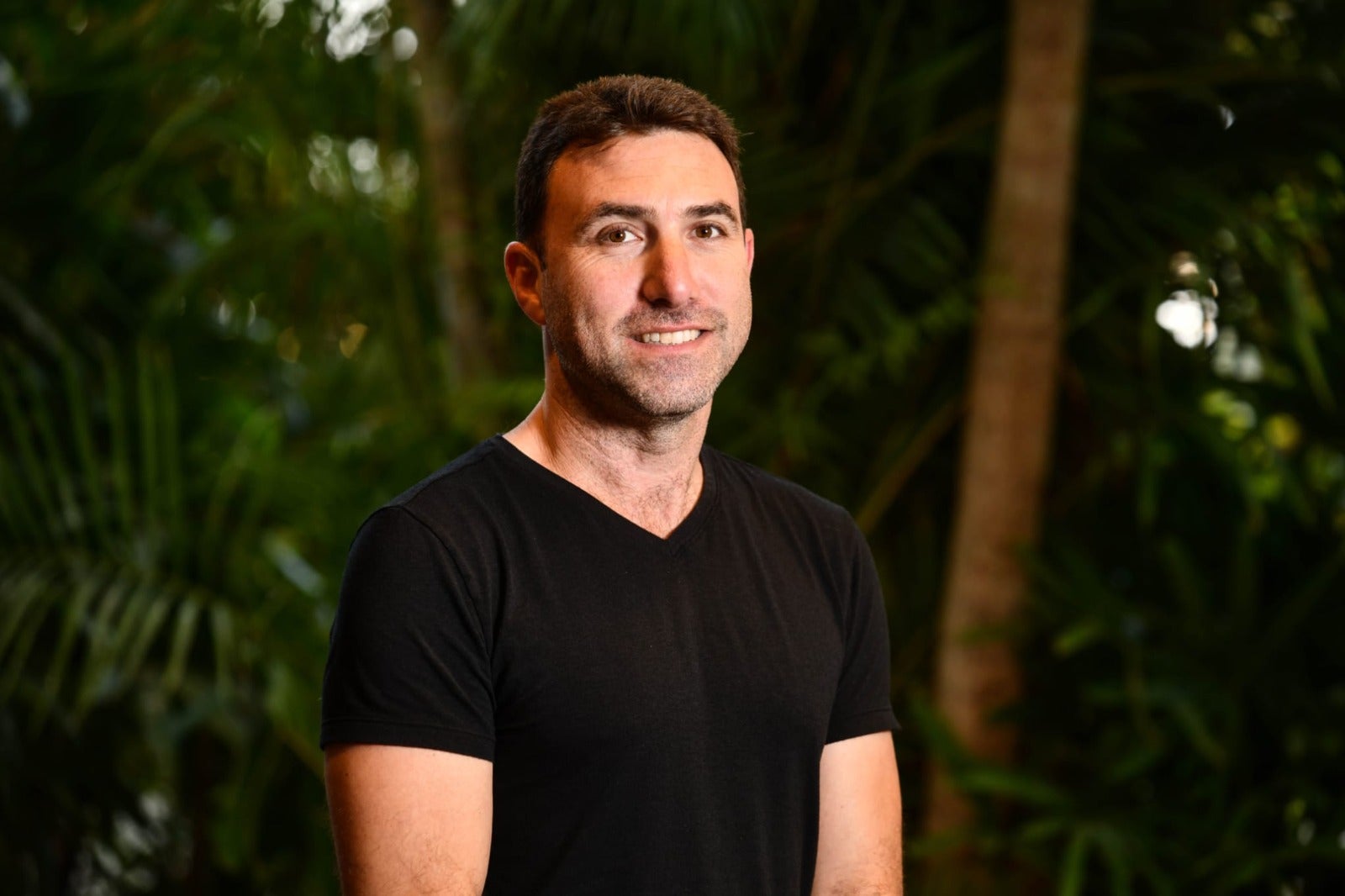
Neri Shotam runs the Kibbutz Movement’s rehabilitation fund. (Courtesy Shotam)
“We didn’t come to save anyone, and I don’t like the word ‘rehabilitate.’ We work alongside the people who were here long before us and who will probably be here after us,” the Kfar Saba native told the Hebrew-language Israel Hayom daily. “Some may call it Zionism, but that is not what guided me. I just felt more people were needed here to help get the wheels turning again.”
Maya gave up a job at a Tel Aviv startup to relocate to Kibbutz Re’im, along with eight other young adults. The community is back to over 180 families (out of 200 pre-war), and a further 10 new families that have since joined.
The kibbutz’s secretary, Zohar Livneh-Mizrahi, said the new arrivals had changed the mood.
“It isn’t something to take for granted, but I see how strongly people want to be involved and lend a hand,” she said. “It moved me from the get-go, and still does. We are writing a new chapter in the history of the kibbutz and of Zionism.”
Repopulation of the northern kibbutzim is the Chalutzi project’s next frontier, Shotan said. Damage there is extensive, and the return has been patchier, with 30% of the kibbutz members still living elsewhere.
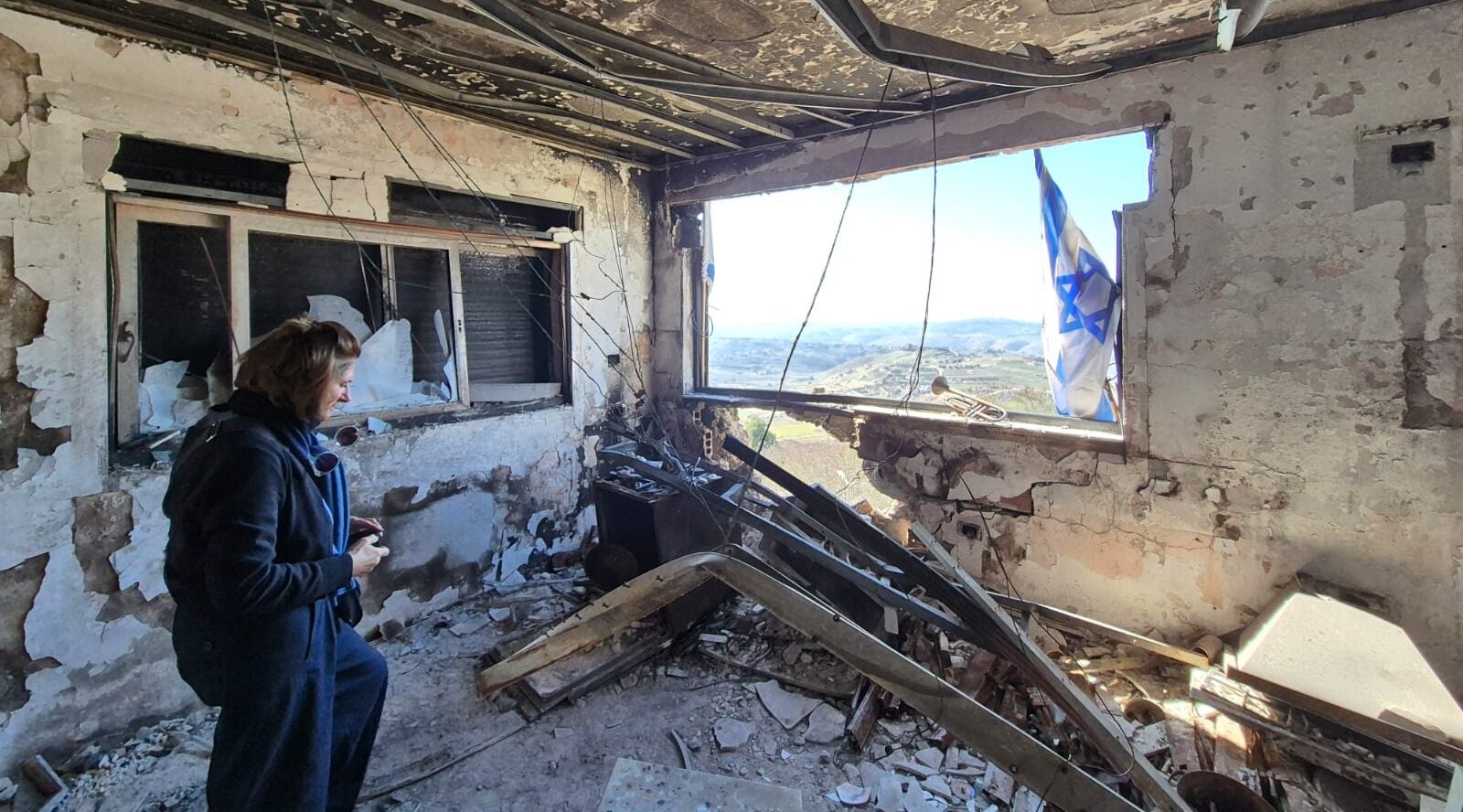
A resident gazes at the devastation at Kibbutz Manara in Israel’s north. (Courtesy KMRF)
Israeli authorities put northern property losses at about 9 billion shekels, but only about 2.2 billion shekels had been disbursed by mid-year, leaving a large gap that locals say is slowing work on housing, public buildings and farms. Tenufa, the northern framework intended as a counterpart to Tekumah, lacked sufficient funds and authority to push projects, and kibbutz leaders say they have to work across more than a dozen ministries to secure approvals.
Agriculture could take four to five years to regrow, yet without permits in place, little has started. Some of the kibbutzes have grown tired of waiting. At Yiftach, where rockets destroyed about 90% of fields, kibbutz members chose to bypass the state and funded clearing and replanting on their own.
External shocks have compounded the strain, Shotan said. Houthi attacks in the Red Sea have disrupted shipping and forced longer routes, raising costs and in some cases, spoiling the exports. Economic boycotts levied at Israel have cut demand in certain European markets and new tariffs by the Trump administration have further scrambled trade flows and pricing.
Back south in Nir Oz, Gritsevsky joined 200 others for a communal Rosh Hashanah meal. He described the mood among the new arrivals and veterans as a mix of resolve and strain.
“We’re all still living with this tension that on the one hand, it isn’t over – the grief is still with us and will keep being with us, but at the same time, we want to stand up and take responsibility to rebuild,” he said.
Keep Jewish Stories in Focus.
(JEWISH REVIEW) has documented Jewish history in real-time for over a century. Keep our journalism strong by joining us in supporting independent, award-winning reporting.

